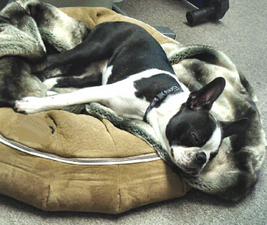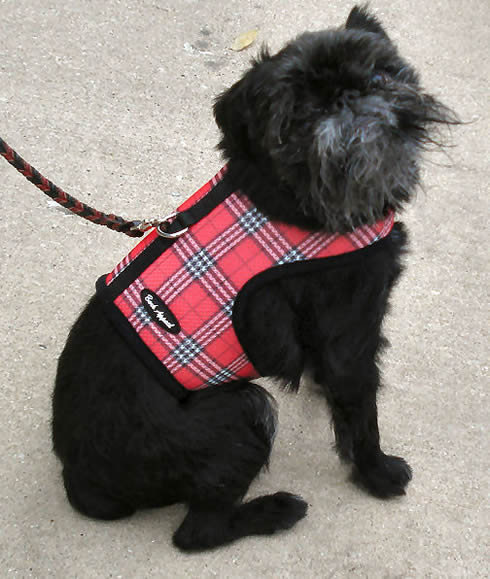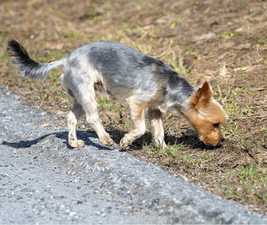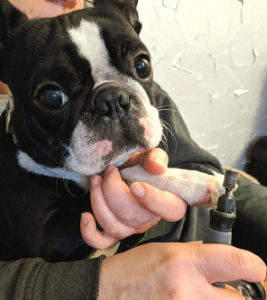Is your dog a sleepy head? Are you worried about it? The truth is that dogs sleep more than people do.
The average dog needs between 10 and 15 hours of sleep every day. Puppies need even more.
Not lazy at all
One of the concerns we hear from our dog training students is their dogs are “bored,” and sleep out of boredom. The truth is a bit different. After a training game, or any kind of exertion, dogs need a nap. That’s the way most predatory animals are built. They have periods of intense activity, then dogs nap.
When you think about it, it makes sense. Intense activity uses lots of calories. For predators, this would be hunting. Then eating. Then napping. As if every day were Thanksgiving!
For dogs, that could be playing fetch, going for a walk, or even playing dog-training games. Asking our dogs to think is just as tiring as physical activity. Remember when you were in school and were really tired after tests? Same thing, but training games are lots more fun.
Let it sink in
Dogs sleep for both physical and mental rest. They need the down time to process things they’ve learned. That’s one of the reasons puppies need so much sleep – up to 20 hours a day. Growing takes a lot out of a pup. So does thinking.
Research has shown that dogs learn more, retain that learning better, and are more confident when short training sessions are followed by longer breaks.
Let sleeping dogs lie
There’s no reason to be concerned if your dog sleeps most of the day away. They don’t need constant entertainment or stimulation.
That’s why we’re not huge fans of the doggy day care concept. Dogs don’t need to play all day. The constant activity and excitement floods their systems. That makes it even harder for them to relax.
If you do need to use a day care, try to set limits on the amount of time your dog is expected to be active, especially with other dogs. Some “down time” during the day will help him learn to settle when at home with you.
Old dogs sleep a lot
Older dogs, like puppies, may need more sleep. And they sometimes give us a fright when we try to wake them. Either they don’t hear as well, or they sleep deeper, but it can take some doing to wake an old dog from his nap.
When your old dog does awaken, give him a moment to get oriented and figure out what’s going on. Whatever dreams they were having, it may take a bit to get focused. That’s where we are with 13-year-old Tango now.
That contrasts with young, healthy adult dogs who can startle from sleep into instant attention and barking. We’ve got that, too. Simon (3) and Booker (9) our Boston Terriers can go from snoring to watchdog-at-attention in nothing flat. It can be startling if you were napping, too!












